
Potstickers are the first things I look for in a Chinese restaurant. I love to dip the silky soft dumpling in the soy dipping sauce and quickly transfer the gyoza to my mouth to get as much of the sauce and warm meat-filled goodness into me before I drip sauce down my front. I have to admit I have been known to slurp a whole order of potstickers myself. (And I usually end up with a mess on my shirt.) These pork and vegetable potstickers with a classic gyoza dipping sauce are one of my favorite dishes to make.
You don’t have to wait until you go out to a restaurant to enjoy this dish since they are deuce easy to make at home. And with a little practice, your potstickers will look just like the pleated little half-moons that you find at your favorite Chinese place.
I have tweaked the basic recipe to include more vegetables since it is a sad thing to take a bite of a gyoza and end up with all the filling in the first bite and have just limp wrapper left for the second bite. I like the texture and flavors that packing in the veggies into the filling gives. Instead of a lump of cooked meat in the center, there are enough vegetables to keep the meat loose and gives each bite plenty to make you smile about.
The difference between Egg Roll Wrappers, Spring Roll Wrappers, Won Ton Wrappers, and Gyoza Wrappers
- Egg Roll Wrappers consists of a yellowish egg-noodle dough and is about 8” square. They are usually found near the produce section of the grocery store and come in packages containing about 25 wrappers. They are usually fried.
- Spring Roll Wrappers are made of the thinner flour-based dough which makes a thin, flaky surface when fried. They are pale yellow in color. Spring Rolls usually are filled with carrots and bamboo and other vegetables and are formed into small log-shaped rolls. They are found in Asian markets.
- Fresh Spring Roll Wrappers are made from rice flour and are white, dry and brittle (often with a crosshatch pattern on the surface. They come in a variety of sizes and have to be reconstituted by soaking in water before being used. These wrappers are found in the ethnic aisle of the grocery store and are used to make fresh spring rolls which are not cooked in any way.
- Won Ton Wrappers are made with the same dough as egg roll wrappers. They come in packages of 3-1/2” squares and each package contains about 5-6 dozen wrappers. Also found near the produce section of the grocery store. They can be boiled, steamed, or deep-fried.
- Gyoza Wrappers are made from flour and water and are thinner than won ton wrappers. Homemade gyoza wrappers will cook up into a thicker, softer wrapper than the commercially produced wrappers. Gyozas are actually Japanese in origin. They are pale in color and come in 3-1/2” circles. Gyoza wrappers are found near the produce section by the egg roll wrappers and won ton wrappers. They come in packages containing about 48 wrappers.
Step by Step Guide to Wrapping Potstickers
Set up your wrapping station with a small bowl of warm water and a baking tray.

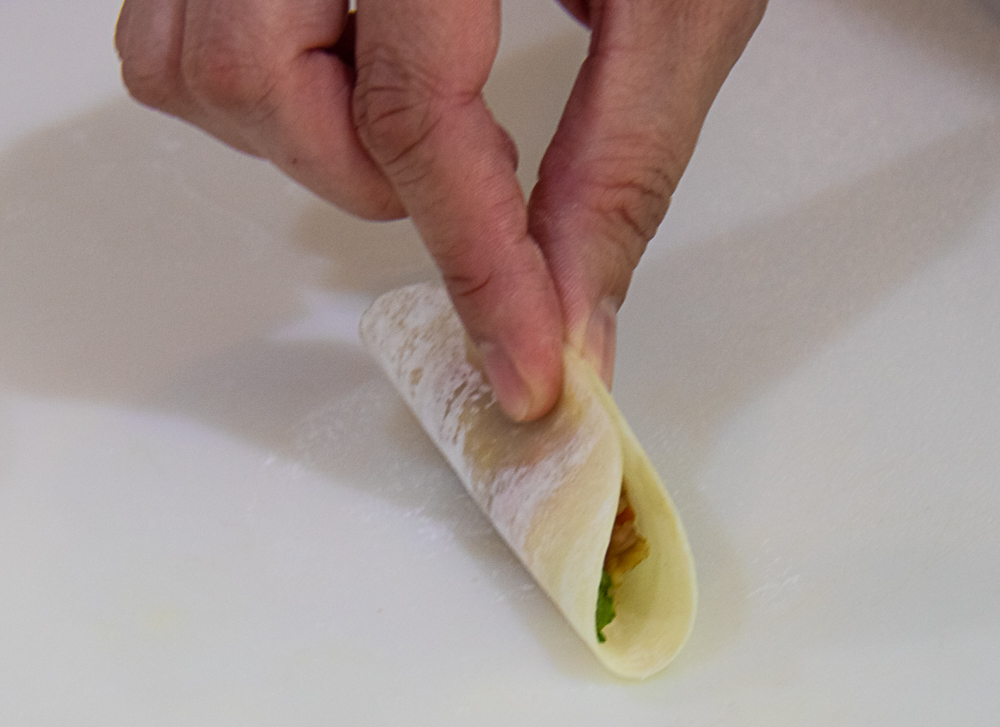
Spoon about one large teaspoon of the pork mixture into the center of a wrapper.
Dip a finger in water and use the water to wet the outer rim of the wrapper.
Pinch the center of the gyoza wrapper together, (so the meat is resting on the bottom of the wrapper and you are holding both halves of the circle off the surface.


Staring to work on the right side of the center pinch, push a small section of the the side of the wrapper closest to you in toward the center point of the wrapper which is already pinched close to form a little tuck, then pinch both the wrapper side with the tuck and the wrapper side that is in back together to seal. Continue forming tucks until the side is sealed.
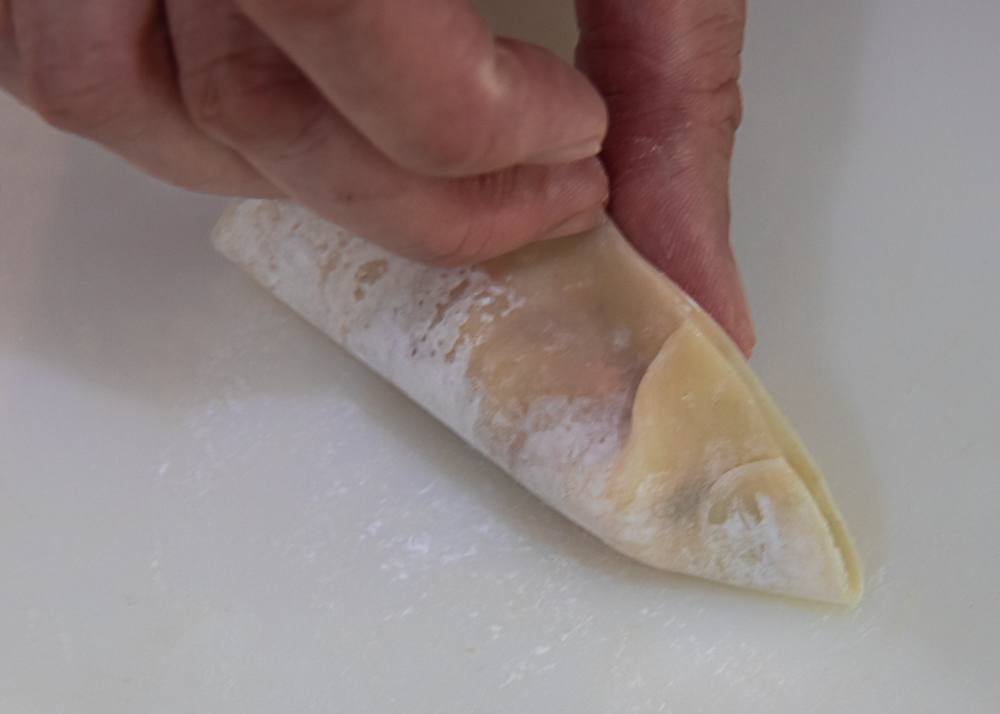


Change to the left side and repeat the tucking action. By this pleating, method forms a half-moon gyoza dumpling. (I usually aim for 3-4 tucks on both the left and right sides of the center pinch.
Work quickly and gently to wrap the pork in all the gyoza wrappers. Being careful to have the water only where you want it to act as glue to seal the dumpling.
Set each dumpling on the baking tray making sure there is space between each gyoza.
Print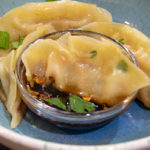
Pork and Vegetable Potstickers with Classic Dipping Sauce
- Prep Time: 40 minutes
- Cook Time: 8 minutes
- Total Time: 50 minutes
- Yield: 50 potstickers 1x
- Category: appetizer, pork
- Method: pan fried
- Cuisine: Asian
Description
Seasoned pork and vegetable potstickers dipped in a simple but classic dipping sauce. These gyozas will warm you from the inside out.
Ingredients
Potsticker Filling
- 1/3 pound ground pork
- 2 cups finely chopped napa cabbage, (less than half a head)
- 1 carrot, peeled and finely chopped
- 1/2 white onion, finely chopped (1/3 cup)
- 6 green onions, minced both white and green parts
- 2 cloves garlic, minced
- 1 tablespoon fresh ginger, minced
- 1 tablespoon cilantro minced
- 1 tablespoon soy sauce
- 1 teaspoon roasted sesame oil
- 1/2 teaspoon salt
- 1/2 teaspoon ground white pepper
- 1/4 teaspoon five spice powder
- 1 package gyoza wrappers (about 48)
- 2 tablespoons vegetable oil
Classic Gyoza Dipping Sauce
- 2 tablespoons rice wine vinegar
- 2 teaspoons soy sauce
- 1/2 teaspoon roasted sesame oil
- Pinch of crushed red pepper flakes
Instructions
- Combine ground pork, napa cabbage, carrot, onion, green onion, garlic, ginger, cilantro, soy sauce, sesame oil, salt, pepper, and five spice powder in a large bowl.
- Using you hands, gently combine the mixture until all the ingredients are distributed and incorporated. You don’t want to over process the meat or compress the mixture.
- Set up your wrapping station with a small bowl of warm water and a baking tray.
- Spoon about one large teaspoon of the pork mixture into the center of a wrapper.
- Dip a finger in water and use the water to wet the outer rim of the wrapper.
- Pinch the center of the gyoza wrapper together, so the meat is resting on the bottom of the wrapper and you are holding both halves of the circle off the surface.
- Staring to work on the right side of the center pinch, push a small section of the the side of the wrapper closest to you in toward the center point of the wrapper which is already pinched close to form a little tuck, then pinch both the wrapper side with the tuck and the wrapper side that is in back together to seal. Continue forming tucks until the side is sealed.
- Change to the left side and repeat the tucking action. By this pleating method forms a half moon gyoza dumpling. Aim for 3-4 tucks on both the left and right sides of the center pinch.
- Work quickly and gently to wrap the pork in all the gyoza wrappers.
- Set each dumpling on the baking tray making sure there is space between each gyoza.
Cooking Instructions
- When ready to cook the gyozas, heat canola or vegetable oil in a medium size skillet over medium heat. Arrange the gyozas with the seams up in a circle around the inner edge of the skillet. Repeat forming concentric circles of gyozas in the pan until the whole pan is filled. If you want to cook fewer gyozas, use a smaller skillet. Fry until the bottom of the gyozas are golden brown and crispy (about 2-3 minutes).
- Pour enough water into the skillet to come a little more than half way up the dumplings (between 1/2 – 3/4 cup). Place a lid over the skillet to allow the gyozas to steam.
- Cook the dumplings in the steam for 5- 7 minutes, or until most of the liquid has boiled away. Remove the lid and let the gyozas cook for a minute more, until the water is gone and bottom is has a chance to become crispy again.
- Serve hot with dipping sauce.
Notes
Keep the unused gyoza wrappers covered with plastic wrap so they won’t dry out. You can freeze the uncooked dumplings by placing the baking tray in the freezer for several hours until firm. (Make sure that the gyozas aren’t touching each other when you place the tray in the freezer as they will be stuck together once frozen.) Once firm, carefully remove each gyoza from the cold baking sheet and place in a zip close bag and return the bag to the freezer. Gyozas can be frozen for up to 6 months. You can cook the dumplings frozen, just add time to both the initial frying and the steaming—about 5 minutes to each step.

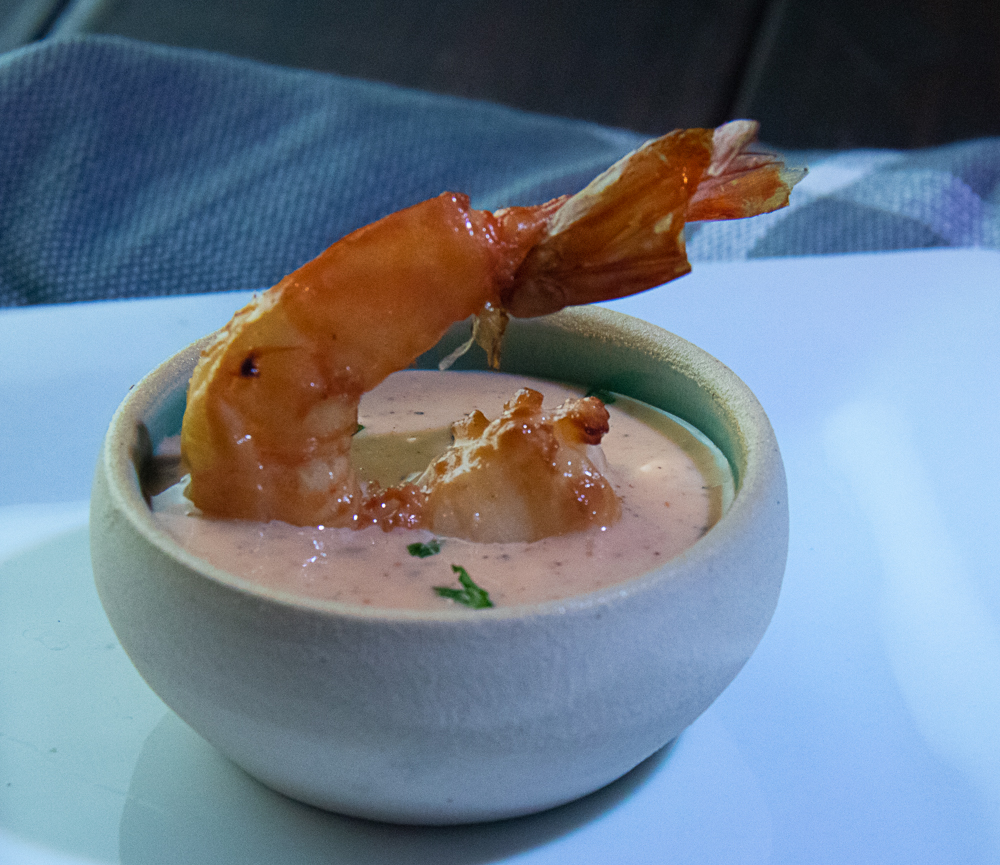
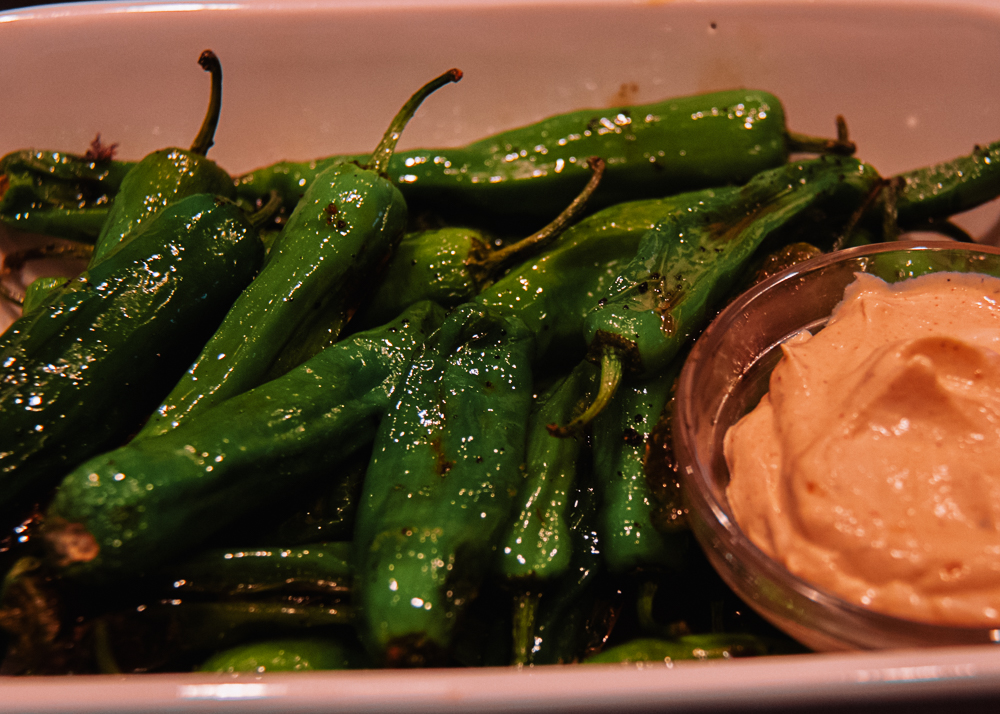
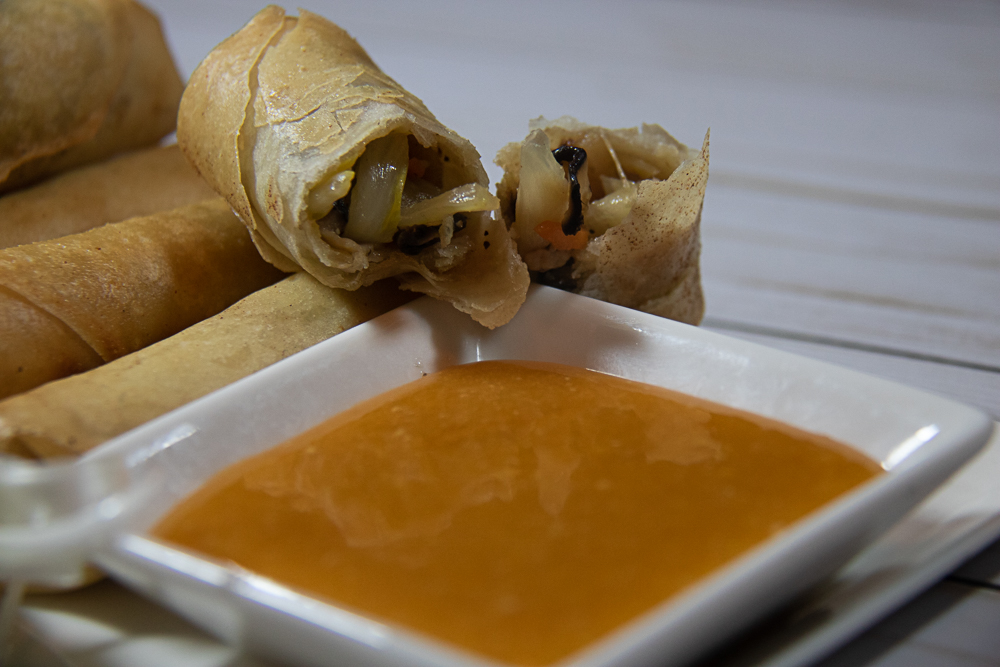
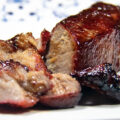
Leave a Reply